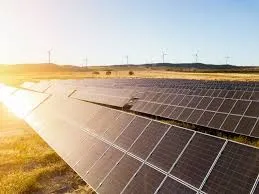Innovative Bi-Facial Solar Panels Enhancing Energy Efficiency and Sustainability Solutions
The Rise of Bifacial Solar Panels A Sustainable Future
In the quest for sustainable energy sources, solar power has emerged as a front-runner in combating climate change and reducing reliance on fossil fuels. Among the latest innovations in solar technology, bifacial solar panels are rapidly gaining traction due to their enhanced efficiency and versatility. This article explores the characteristics, benefits, and applications of bifacial solar panels, highlighting their potential to revolutionize the solar energy landscape.
What are Bifacial Solar Panels?
Bifacial solar panels are unique in that they capture sunlight from both sides of the panel, unlike traditional monofacial panels that only utilize one side. This dual-sided design allows bifacial panels to harness not only direct sunlight but also reflected sunlight from surfaces beneath them, such as ground, sand, or water. As a result, bifacial panels can generate 10% to 30% more energy than their monofacial counterparts, depending on environmental conditions and installation specifics.
Key Advantages of Bifacial Solar Panels
1. Increased Energy Output The ability to absorb light from both sides means that bifacial solar panels can achieve higher energy yields. This characteristic makes them particularly attractive for large-scale solar installations where maximizing efficiency is crucial.
2. Longer Lifespan Bifacial solar panels are often constructed with durable materials that enable them to withstand harsher environmental conditions. Their robust design can lead to longer lifespans and less frequent replacements, resulting in lower long-term costs.
3. Versatile Installation Bifacial panels are adaptable to various installation formats, including ground-mounted systems, rooftops, and even vertical applications. They can be installed in configurations that enhance their light absorption, such as elevated structures that allow more reflected light to reach the rear side.
4. Reduced Land Use Given their higher energy output, bifacial panels require less land per unit of energy generated compared to traditional panels. This characteristic is particularly beneficial in regions where land availability is limited or expensive, making solar energy more accessible.
5. Environmental Benefits Bifacial solar panels can contribute to a more sustainable energy ecosystem. By generating more energy from the same amount of sunlight, they help reduce the quantity of solar panels needed for a given energy output, thus minimizing the material and energy required for production and installation.
bi facial solar panel

Applications of Bifacial Solar Technology
Bifacial solar panels are versatile and can be employed in a variety of applications. Some of the most promising scenarios include
- Utility-Scale Solar Farms Bifacial panels are ideal for large solar farms where maximizing energy production is essential. Their increased efficiency can significantly enhance the overall output of these facilities, making solar power a more competitive option in the energy market.
- Rooftop Installations In urban settings, bifacial panels can be mounted on rooftops where space is at a premium. Their design allows for more energy generation in limited areas, making them an efficient choice for residential and commercial buildings.
- Agrivoltaics The integration of solar panels with agricultural practices—known as agrivoltaics—can benefit from bifacial technology. The panels can provide shade for crops while producing energy from both solar sides, enhancing land usability without sacrificing agricultural productivity.
Challenges and Future Directions
While bifacial solar panels offer numerous advantages, they are not without challenges. Their initial costs can be higher than monofacial panels, and their performance can be influenced by installation factors such as tilt angle and ground reflectivity. Additionally, education and awareness about their benefits are necessary to encourage broader adoption.
Looking to the future, research and development in bifacial solar technology continue to advance. Innovations in materials, design, and installation techniques hold the potential to further enhance the efficiency and affordability of bifacial panels.
Conclusion
Bifacial solar panels represent a significant leap forward in solar technology. Their ability to generate more energy, coupled with their versatility and durability, positions them as a key player in the transition to a sustainable energy future. As the world continues to prioritize renewable energy solutions, bifacial solar panels could play a crucial role in meeting global energy demands while mitigating the impacts of climate change. Embracing this technology could be a pivotal step toward a cleaner, greener planet for future generations.
-
Unlocking Energy Freedom with the Off Grid Solar InverterNewsJun.06,2025
-
Unlock More Solar Power with a High-Efficiency Bifacial Solar PanelNewsJun.06,2025
-
Power Your Future with High-Efficiency Monocrystalline Solar PanelsNewsJun.06,2025
-
Next-Gen Solar Power Starts with Micro Solar InvertersNewsJun.06,2025
-
Harnessing Peak Efficiency with the On Grid Solar InverterNewsJun.06,2025
-
Discover Unmatched Efficiency with the Latest String Solar InverterNewsJun.06,2025







